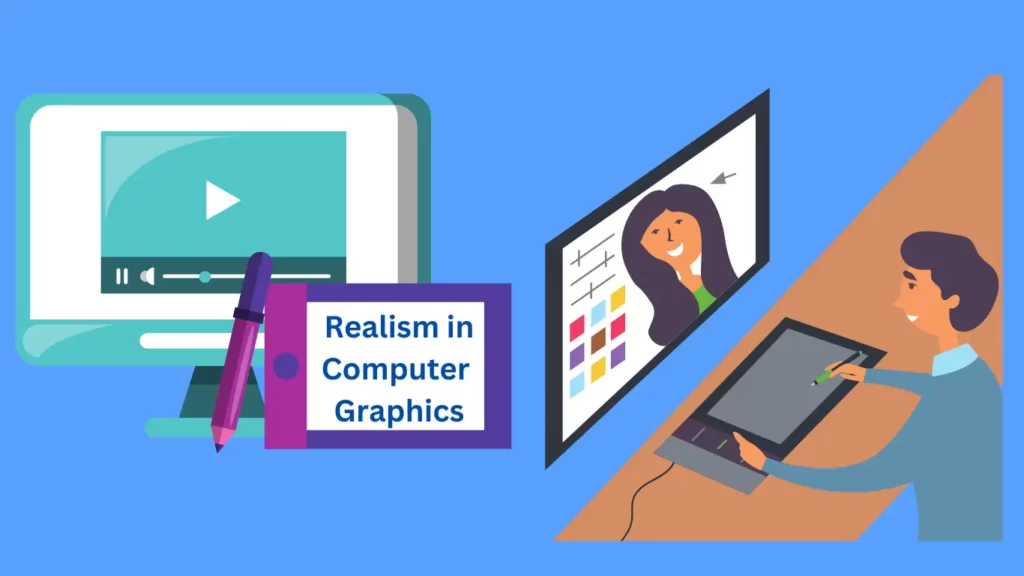Realism in Computer Graphics: One of the main goals of computer graphics is to create realistic imagery that can seamlessly blend with the real world. Achieving realism in computer graphics involves a combination of technical expertise and artistic skill.

To create realistic computer-generated images, artists and designers use a variety of techniques. One such technique is ray tracing, which simulates the behavior of light as it interacts with objects in a scene. By tracing the path of each ray of light, artists can accurately calculate how light bounces off different surfaces, resulting in more realistic shadows, reflections, and refractions.
Another technique used to enhance realism is texture mapping. By applying textures to 3D models, artists can create the illusion of different materials, such as wood, metal, or fabric. This attention to detail adds depth and believability to the virtual world, making it more immersive for the audience.
Techniques for Enhancing Realism in Digital Media | Realism in Computer Graphics
Enhancing realism in digital media involves a combination of various techniques and technologies. Here are some commonly used techniques to achieve realistic visuals:
Global Illumination:
Global illumination techniques simulate the way light bounces and interacts with objects in a scene. This creates more realistic lighting effects and enhances the overall realism of the image.
High Dynamic Range Imaging (HDRI):
HDRI allows for a wider range of brightness levels, resulting in more detailed and realistic images. This technique is particularly useful for capturing the full range of lighting conditions in a scene.
Physically Based Rendering (PBR):
PBR is a technique that aims to accurately model the behavior of light in the real world. By using physically accurate materials and lighting models, PBR can create highly realistic and believable images.
Subsurface Scattering
Subsurface scattering is a technique used to simulate the way light interacts with translucent materials, such as skin or wax. By accurately depicting how light scatters beneath the surface, artists can create more realistic and lifelike materials.
Procedural Generation:
Procedural generation involves using algorithms to generate content automatically. This technique is commonly used to create realistic landscapes, textures, and patterns in digital media.
By combining these techniques and staying up-to-date with the latest advancements in computer graphics, artists and designers can continue to push the boundaries of realism in digital media.
So that’s all about Realism in Computer Graphics | 5 Techniques for Enhancing Realism in Digital Media.
- Tools and Software for Creating Computer Graphics | Career Opportunities in Computer Graphics
- TOP 6 Use of Computer graphics | Applications of Computer graphics
- 9 Essential Uses of Computers in Hospitals
- TOP 5 Advantages of Internet Banking
- TOP 4 Roles of Automation in Bank